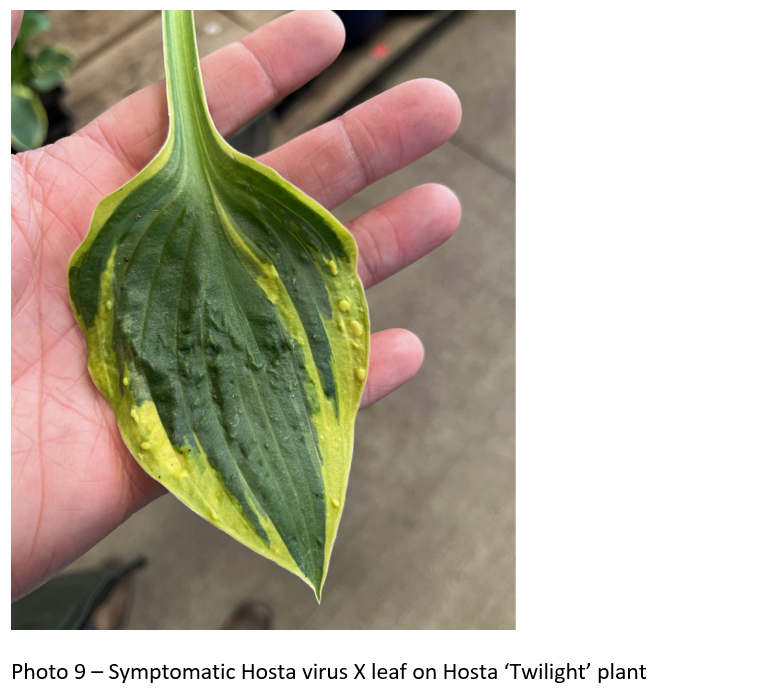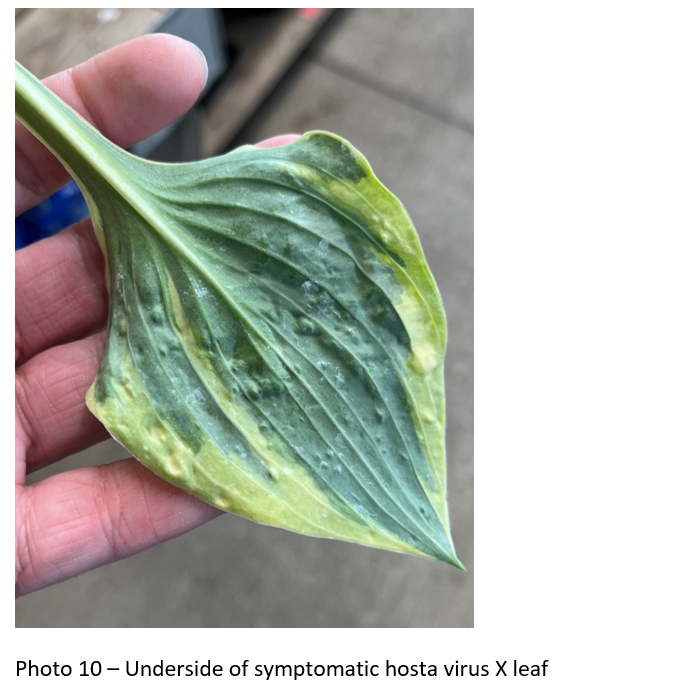Weekly Review for May 9, 2024
This informal report by the Division of Entomology & Plant Pathology is a commentary on insects, diseases, and curiosities division staff encounter on a week-to-week basis. Comments and questions about this report are welcome and can be sent to your respective Inspector.
Angela Rust (Nursery Inspector & Compliance Officer) -
I’ve attached a photo this week of adult weevil feeding damage on roses. Irregular notching around the edges of roses and other ornamentals is a sign of adult weevil feeding. Adults will not likely be seen unless you survey the plants at night because that’s when feeding occurs. The larvae of weevils are in the soil and feed on plant roots. Beneficial nematodes are commercially available to control root-feeding larvae or insecticides. They can be applied to target adults when notching damage appears on leaves. Several species of weevils feed on ornamental plants.
Eastern tent caterpillars in this area are maturing and leaving nests in trees to find a protective location to pupate. I’ve already been seeing a lot of Botrytis blight on geraniums. We have had a fair amount of rain this spring and this part of the state tends to be very humid. These are ideal conditions for development of Botrytis fungus. Symptoms can start as spots on leaves, cut stems, or flowers and then spots can enlarge or join together to form a large brown blighted area which causes leaves or flowers to wilt and die. Watering plants from the base instead of overhead and not overcrowding plants can help with prevention. Trimming out early signs of infected leaves and disinfecting shears in between cuts can help prevent spread. There are also fungicides available to help control this problem.
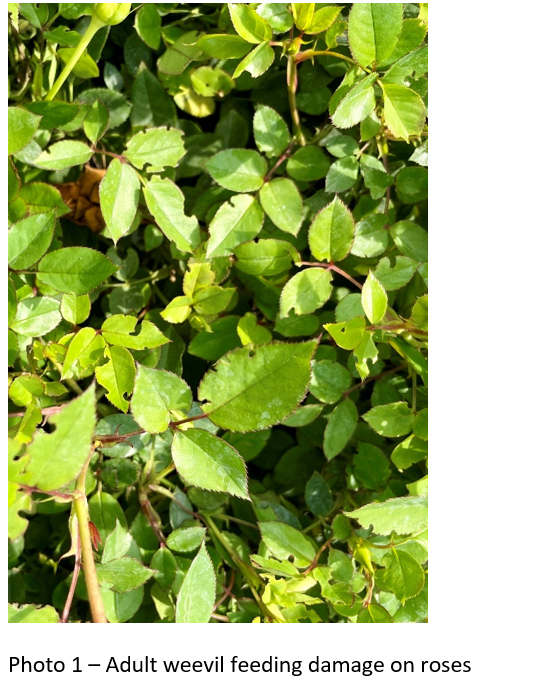
Jared Spokowsky (Nursery Inspetor & Compliance Officer) -
I was asked to look at some nucs that were brought into the state this past week. I saw spotty brood, jagged torn open cappings and a foul odor. Those are typical American Foulbrood symptoms and should raise some alarm bells with any beekeeper, but it’s important to look carefully because things are not always what they appear to be at first glance. There was no oil residue on top of cappings and none of the cappings were sunken. Upon further investigation when capped cells were opened there was no decomposing brood and no open cells showed signs of hardened scale in the bottoms. When the contents of the cells were scrambled you could not get any material to rope out. This led me to look for other causes.
The most prominent other symptom was the presence of quite a bit of chewed down brood. Chewed down brood is indicative of Parasitic Mite Syndrome (PMS). PMS is basically when mite populations have gotten out of control and the bees are no longer strong enough to keep up with maintaining basic hive functions. However, in this case I could not find a single mite after removing dozens of bees from capped cells and the beekeeper had stated that they were treated prior to being moved. Ultimately, I came to the conclusion that all the symptoms were the result of chilled brood. The bees had been brought in during a cold snap the previous night and had a 6+ hour drive. Furthermore, a lot of the brood frames had been placed on the outside frame of the nuc.


I was also forwarded another report of dying boxwood. If you’re not familiar with boxwoods, they are a very popular evergreen landscape plant. Over the past few years there has been concern that boxwood blight could wipe them out. Although boxwood blight has been a problem, we have not seen it readily establish here in Indiana even after intercepting it multiple times on incoming nursery stock and finding it in isolated landscapes.
Now the Box Tree Moth (BTM) is another problem that Indiana boxwood will most likely face soon. Native to China and the Korean Peninsula, it was found in Europe in 2006 and then in Canada in 2018/ It has now been found in four U.S. states (Michigan, Ohio, New York, and Massachusetts). BTM is a voracious foliar feeder and can completely defoliate an entire boxwood in a single season. For more information on BTM please visit this Cornell Link. Thankfully, the residence I was called out to look at had a combination of cold damage from the winter and a heavy infestation of boxwood psyllid whose feeding damage will cause some cupping to the leaves but poses no significant threat to boxwoods.
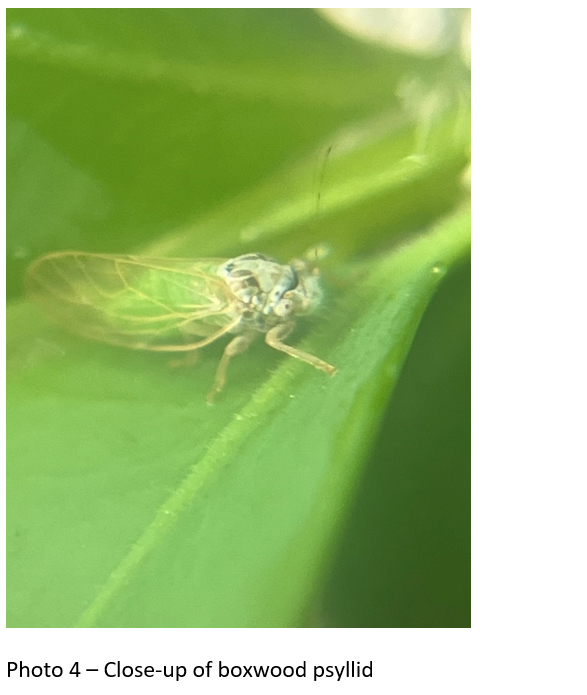
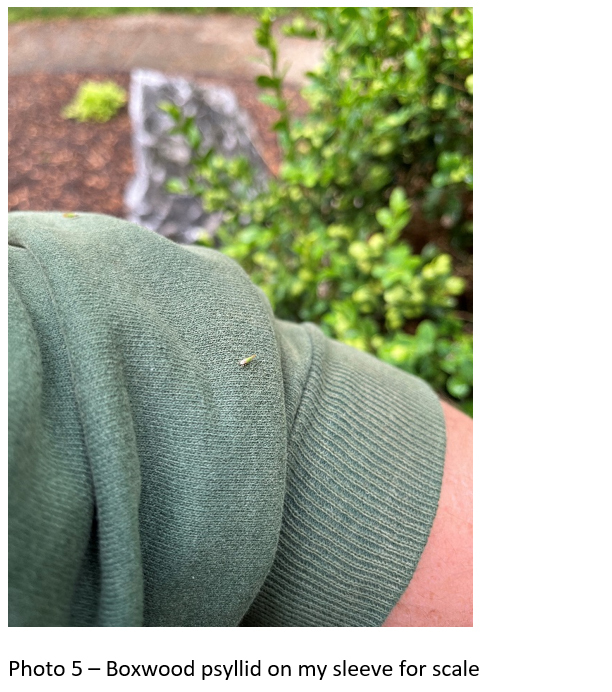
Vince Burkle (Assistant Division Director & Nursery Inspector) -
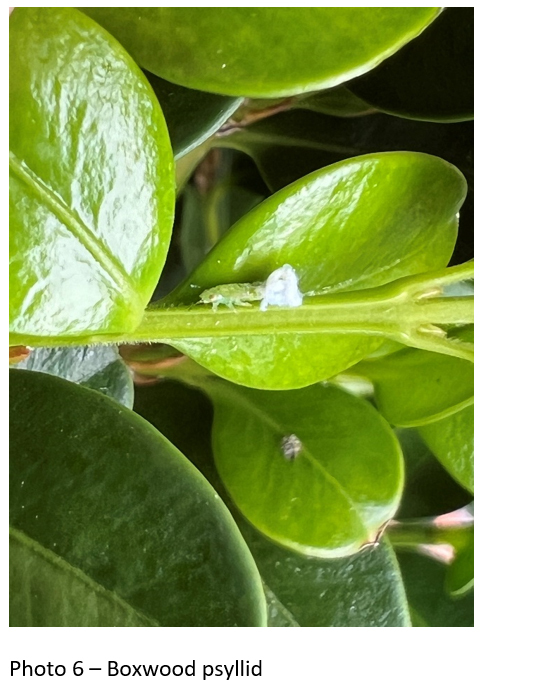
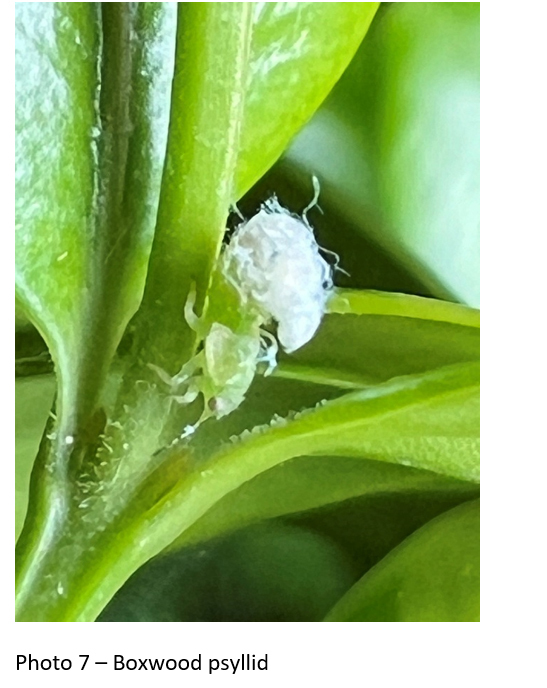
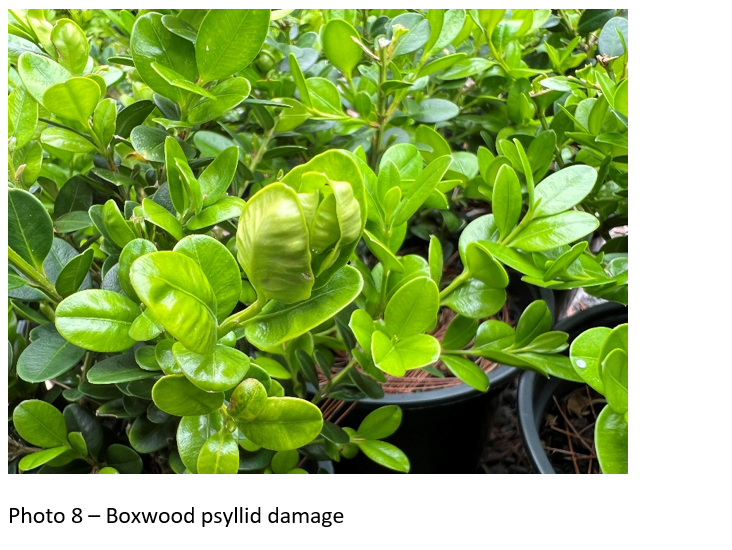
Will Drews (Nursery Inspector & Compliance Officer) -
During a recent inspection, I found a Hosta ‘Twilight’ plant with some unusual foliar characteristics. It had some discoloration to the leaves and a fair bit of bumpy, puckering, mottled sections (see below photos). After sending a sample to Purdue’s Plant and Pest Diagnostic Lab, it was confirmed that this plant was infected with hosta virus X (HVX).
HVX is a virus that impacts all hosta cultivars. Symptoms include discoloration around the leaf veins, leaf mottling, puckering, and ringspots. In severe cases, this can lead to wilting and necrosis. Symptom presence varies among different cultivars. If you suspect HVX presence, it is wise to send a sample to a plant diagnostic lab for confirmation.
HVX is unfortunately not treatable and is spread via the sap of infected plants. Infected plants should be removed and incinerated or bagged and trashed. Do not compost infected material as it can spread the virus.
For more information, check out this Purdue University Landscape Report.
